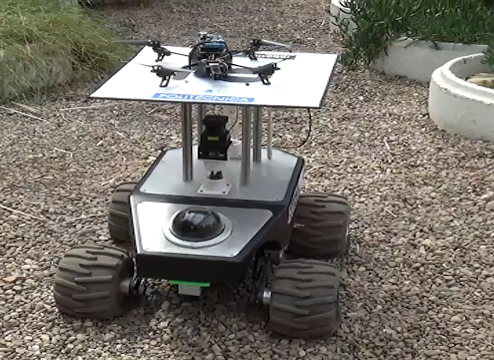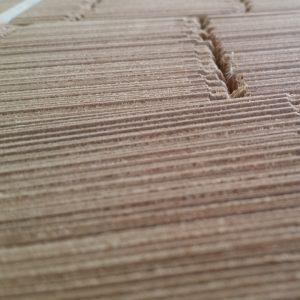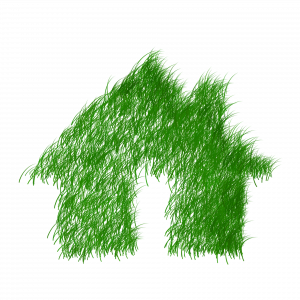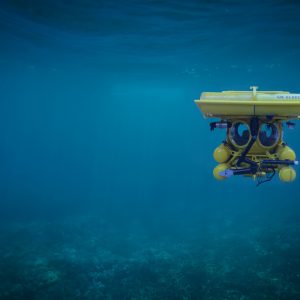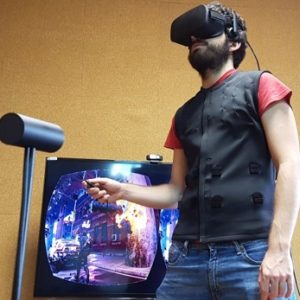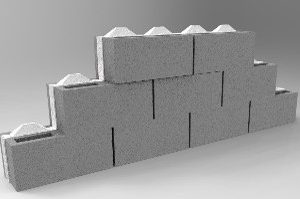Brief description of the solution and the added value it delivers
GreenBot is a team of ground and aerial robots that work together to monitor the environmental conditions of greenhouses. Having information on these conditions makes it possible to boost crop growth, which can lead to an estimated 20% increase in productivity, as well as detecting and correcting deviations that could cause crop losses. This proposal outperforms its current alternatives – fixed sensors and sensor networks – as it provides greater spacial and temporal resolution. The system combines the strengths of ground robots (robustness and autonomy) and aerial robots (agility and speed), while also overcoming their weaknesses. The solution has been tested successfully in three different scenarios: a productive greenhouse, a seedbed and a botanical greenhouse. The solution was developed by the Robotics and Cybernetics Group at the Centre for Automation and Robotics, which has extensive experience in projects involving the application of robotics to agriculture.
Description of the technological basis
The solution consists of a team of ground and aerial robots equipped with temperature, humidity, light and gas-concentration sensors. The robots move around the greenhouses, taking measurements and sending them to a central station, which analyses them and constructs maps. The information they gather can be used to control the environmental conditions and improve productivity.
The use of different types of robots is justified because each one has its strengths and weaknesses. Ground robots provide robustness and autonomy, as they are able to roam the aisles of the greenhouse for hours, while the aerial robots provide agility and speed, as they can access difficult areas and take measurements at different heights.
‘The robots do work that humans are neither able nor want to do: monitor the environmental conditions of the greenhouse 24 hours a day, 365 days a year’
Business needs / application
- There are 400,000 ha of greenhouses in the world and that figure is growing all the time. The largest concentration of greenhouses is in Almería, where there are 35,000 ha.
- Agriculture under plastic is a very competitive sector, open to new technologies. For example, soil preparation, irrigation systems, pest control, etc.
- The productivity of greenhouses greatly depends on the environmental conditions of the crops. A technologically adapted greenhouse can produce up to 25% more than a traditional one.
- Extreme weather events can cause crop losses if they are not detected and mitigated in time. For example, the rain in 2010 in Almería caused losses amounting to €390 million.
- Agricultural activities have an impact on the environment, mainly in the form of water consumption, fertiliser and pesticide use, and the production of greenhouse gases.
- The application of new technologies can lead to a reduction in the consumption of resources such as water or electricity, as well as a rationalisation of the use of chemical products that can affect the environment.
Competitive advantages
- The solution provides better information about crops by recording their conditions 24 hours a day, 365 days a year. This enables control of these variables and can increase productivity by up to 20%.
- The solution also detects problems that affect the environmental conditions, such as ruptures in the greenhouse walls or roof or failures in the climate-control systems, before the crops are harmed.
- The mobile nature of the sensors makes it possible to measure any environmental variable at the desired place and time, providing a level of flexibility that current systems cannot match.
- The system has been designed in a modular fashion, so that it can be adapted to each farm, offering optimal performance. Moreover, new sensors and actuators can be incorporated to carry out new tasks, such as applying plant treatments.
References
- The Centre for Automation and Robotics has carried out numerous agricultural robotics projects, such as RHEA: Robot Fleets for Highly Effective Agriculture and Forestry Management, funded by the European Commission.
- The prototype developed in this project has been tested in three different scenarios: a productive greenhouse (Almería), a seedbed (Almería) and a botanical greenhouse (Madrid).
- The developments produced by this project have roused the interest of major mainstream media outlets such as RTVE, EuropaPress and EFE.
Stage of development
-
Concept
-
Research
-
Lab prototype
-
Industrial prototype
-
Production
Contact
GreenBot contact
Antonio Barrientos, Jaime del Cerro
Grupo de Robótica y Cibernética (RobCib), Centro de Automática y Robótica (UPM-CSIC)
e:
e:
UPM contact
Innovation and Entrepreneurship Programmes
Technological Innovation Support Centre (CAIT) – UPM
e:



